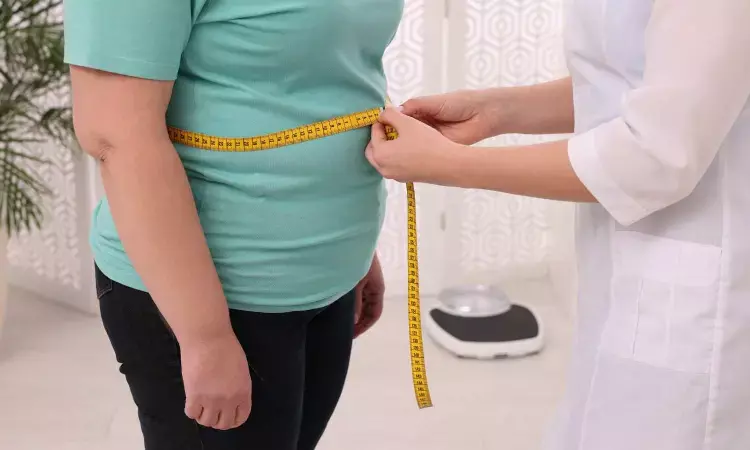- Home
- Medical news & Guidelines
- Anesthesiology
- Cardiology and CTVS
- Critical Care
- Dentistry
- Dermatology
- Diabetes and Endocrinology
- ENT
- Gastroenterology
- Medicine
- Nephrology
- Neurology
- Obstretics-Gynaecology
- Oncology
- Ophthalmology
- Orthopaedics
- Pediatrics-Neonatology
- Psychiatry
- Pulmonology
- Radiology
- Surgery
- Urology
- Laboratory Medicine
- Diet
- Nursing
- Paramedical
- Physiotherapy
- Health news
- Fact Check
- Bone Health Fact Check
- Brain Health Fact Check
- Cancer Related Fact Check
- Child Care Fact Check
- Dental and oral health fact check
- Diabetes and metabolic health fact check
- Diet and Nutrition Fact Check
- Eye and ENT Care Fact Check
- Fitness fact check
- Gut health fact check
- Heart health fact check
- Kidney health fact check
- Medical education fact check
- Men's health fact check
- Respiratory fact check
- Skin and hair care fact check
- Vaccine and Immunization fact check
- Women's health fact check
- AYUSH
- State News
- Andaman and Nicobar Islands
- Andhra Pradesh
- Arunachal Pradesh
- Assam
- Bihar
- Chandigarh
- Chattisgarh
- Dadra and Nagar Haveli
- Daman and Diu
- Delhi
- Goa
- Gujarat
- Haryana
- Himachal Pradesh
- Jammu & Kashmir
- Jharkhand
- Karnataka
- Kerala
- Ladakh
- Lakshadweep
- Madhya Pradesh
- Maharashtra
- Manipur
- Meghalaya
- Mizoram
- Nagaland
- Odisha
- Puducherry
- Punjab
- Rajasthan
- Sikkim
- Tamil Nadu
- Telangana
- Tripura
- Uttar Pradesh
- Uttrakhand
- West Bengal
- Medical Education
- Industry
Higher BMI and Orthopnea Strongly Predict Obesity Hypoventilation in OSA Patients: Study

Researchers have identified obesity hypoventilation syndrome (OHS) in a small but clinically relevant number of patients who are being studied for suspected obstructive sleep apnea (OSA), with high body mass index (BMI) and a past history of orthopnea. OHS was identified in 5.8% of patients who were being studied for suspected OSA in a new Indian retrospective study. The research identifies that higher BMI, female sex, and orthopnea were independently linked with greater likelihood of developing OHS, making screening for these risk factors necessary. The study was published in Scientific Reports by Barney I. and colleagues.
OHS is an underdiagnosed and serious comorbidity of OSA. It greatly aggravates clinical outcomes, but there has not been much data regarding its prevalence and predictors, particularly in Indians. This study sought to bridge this gap using a one-year dataset in 2022 from 674 adult patients based on electronic medical records and sleep studies.
674 patients referred for sleep studies between December 2022 and January 2022 were studied. The mean age in the cohort was 51.7 years (±12.5) with 63.2% (426) being male and 51.3% being obese. Two cases of OHS were identified among non-OSA patients, establishing that OHS usually occurs with OSA.
Prevalence of OHS increased steeply with rising BMI. It occurred in 9% of patients with BMI 30–40 kg/m², 13% with BMI 40–50 kg/m², and went up to 20% with BMI >50 kg/m². This evident trend indicates that obesity is a significant cause of OHS in this group.
Multivariate logistic regression was carried out to determine independent predictors of OHS. The outcome revealed:
Female gender had a 4.1 times increased risk (Odds Ratio, OR = 4.1).
A BMI ≥35 kg/m² augmented the risk by more than threefold (OR = 3.2).
Orthopnea was correlated with a 4.8-fold enhanced risk (OR = 4.8).
While hypothyroidism was linked with OHS in univariate analysis (OR = 2.2), it was not a significant predictor after controlling other variables. The results emphasize that gender, obesity, and certain respiratory symptoms are the strongest red flags for clinicians.
Healthcare systems, particularly in populations with high obesity rates, can be improved by incorporating a routine OHS screening during sleep tests, specifically for those with elevated BMI or indicative symptoms.
In a series of Indian patients referred for sleep study with suspected OSA, the incidence of obesity hypoventilation syndrome was fairly low at 5.8%. Risk was much higher, however, in those with higher BMI, female gender, and orthopnea. These data lend support to targeted screening methods and clinical alertness in the management of patients with such risk factors.
Reference:
Isaac, B., Alexander, C., John, R. et al. Prevalence and predictors of obesity hypoventilation syndrome in an Indian cohort with obstructive sleep apnea. Sci Rep 15, 23474 (2025). https://doi.org/10.1038/s41598-025-08953-9
Dr Riya Dave has completed dentistry from Gujarat University in 2022. She is a dentist and accomplished medical and scientific writer known for her commitment to bridging the gap between clinical expertise and accessible healthcare information. She has been actively involved in writing blogs related to health and wellness.
Dr Kamal Kant Kohli-MBBS, DTCD- a chest specialist with more than 30 years of practice and a flair for writing clinical articles, Dr Kamal Kant Kohli joined Medical Dialogues as a Chief Editor of Medical News. Besides writing articles, as an editor, he proofreads and verifies all the medical content published on Medical Dialogues including those coming from journals, studies,medical conferences,guidelines etc. Email: drkohli@medicaldialogues.in. Contact no. 011-43720751


